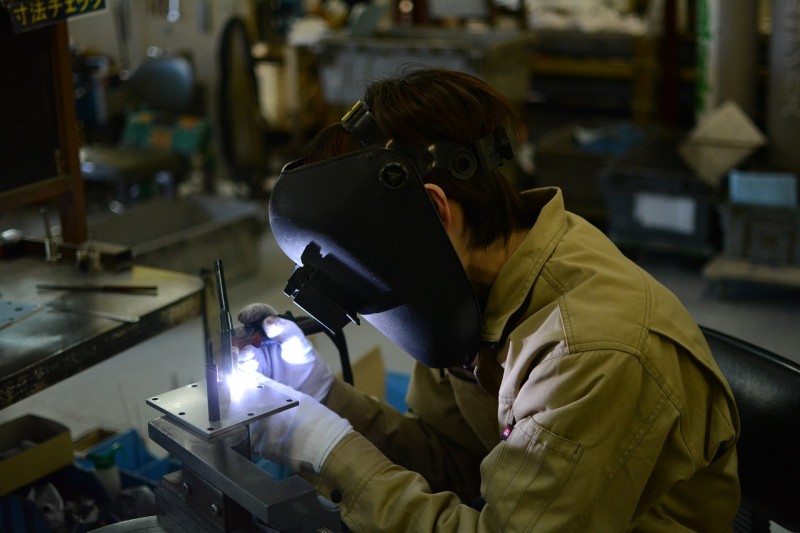Introduction
Today, in a globalized and fast fashion world, there’s an often overlooked hero–thread. Everything from luxury footwear and designer apparel to industrial fabrics and automotive interiors runs on threads. Local manufacturing threads — with the localized production of high-quality threads near its raw material sources or customer bases- have been happening behind the scenes globally.
Now, companies are rewriting the rules for how threads are produced and moved, putting local advantages on a global footing. However, local factories and artisans are manufacturing products that are addressing a global market, but at the same time providing sustainability, agility, and cultural authenticity.
How the localized manufacturing of threads makes global impacts across industries, economies, and cultures is explored and explained through this article as the story of threads that travel the world.
The Importance of Threads in a Connected World
All is not what one would expect — threads are much more than simple strands of fiber. They are craftsmanship, technology, and reliability. From the strength of a shoelace, the durability of a seatbelt, and the threads that make the stitching on a couture gown so beautiful, the threads of almost any product directly influence the strength, durability, and beauty of the end product.
Threads are:
- Textile and footwear structural backbones
- Critical to safety in automotive, aerospace, and industrial applications
- Key contributors to design aesthetics
- Crucial in sustainability efforts through eco-friendly materials
In a global economy, a shoe made in Italy may be worn in New York, a German car races across African roads, and in other cases, threads must meet international standards regardless of where they are produced.
What is Localized Manufacturing?
Local manufacturing means producing goods close to the base of raw materials, customers, and, specifically, to where the skills that are needed are available.
This is often the case in thread production, i.e.
- Spinning, dyeing, and finishing plants are set up near cotton or synthetic fiber sources.
- Placing factories close to major locations in footwear and garment manufacturing
- Collaborating with local craftsmen to do niche or heritage production
Localised does not mean small scale. Instead, it is faster, leaner, and more responsive to local market needs, while still serving the international market.
The Global Journey of a Locally Made Thread
A thread’s life cycle can be a globe-trotting affair. For example:
- Especially for India, cotton was grown and spun locally into thread.
- It is dyed and finished to specific colors in specific performance standards.
- The thread is then shipped to Vietnam factories to be used in shoe manufacturing.
- Sneakers finished are distributed to stores in Europe, North America, and Japan.
This means that a product that is globally sold has been affected by a local thread in manufacturing.
Why Localized Thread Manufacturing Matters
1. Sustainability and Lower Carbon Footprint
Sustainability is one of the main benefits that come from local production. Threads are made closer to fiber sources or final assembly points.
- Transportation emissions are significantly reduced
- Long shipping processes are coupled with the function of minimizing energy consumption.
- Local economies support the reduced need for global overproduction.
For brands that are committed to having a smaller footprint, the sourcing of threads can't happen without bringing them to manufacturers.
2. Faster Lead Times
Localised thread factories can help to produce faster turnaround times. In our current fast fashion, short-cycle industry:
- There are months for brands to wait for thread shipments.
- This puts local production of threads on a faster designer and manufacturer response to trends.
- Inventory is quickly replenished in order to avoid stockouts or imply excess inventory waste.
3. Customized and Specialized Production
Often, when facilities are localized, it is possible to customize them more (in this case, Mesos is generic, allowing for more flexibility; for instance, a Kubernetes cluster has a prescribed structure).
- Small batches of minus (limited editions of footwear collections).
- Creating specialty threads (like glow in the dark, flame retardant) for certain applications
- Heritage techniques unique to certain regions, including the Japanese natural dyeing method(s).
For this reason, localized threads can cater to mass production and advanced levels of artisanal designs.
4. Economic Development and Community Empowerment
Localized manufacturing supports:
- Job creation
- Skill development
- Regional economic stability
It requires maintenance of local production facilities that may protect traditional skills and build national pride in regions where thread making is culturally valuable.
Localized Thread Manufacturing by Key Regions
Asia: The Powerhouse
India, China, Vietnam, and Bangladesh are not only groups of countries that produce garments, but they also have thriving textile manufacturing industries. Support for the booming apparel and footwear industries worldwide, as well as investment in the development of the region, is supported by localizing thread production here.
Europe: Quality and Heritage
In countries such as Italy, France, and Germany, thread manufacturing carries the heritage, precision, and craftsmanship. The European threads are highly desirable for luxury fashion, high-end footwear, and industrial applications.
The Americas: Innovation and Sustainability
Local hubs of thread production in the US and Brazil notably focus on technological innovation and sustainability.
How Technology Fuels Localized Manufacturing
Modern thread factories are different from what they once were. Currently, technology drives localized production to satisfy global criteria:
- Automation and Robotics: Accelerating the processes of spinning, dyeing, and winding.
- Smart Color Matching: Guaranteeing precise color replication across international orders.
- IoT Monitoring: Preserving thread quality via real-time data gathering.
- Blockchain Tracking: Verifying the source and sustainability of recycled sewing thread (like recycled polyester threads)
These advancements ensure that locally manufactured threads are equally as (if not more) dependable and advanced as mass-produced global brands.
Challenges Faced by Localized Thread Producers
Localized thread production presents numerous advantages but also faces challenges:
- Higher expenses relative to mass offshore manufacturing
- Restricted economies of scale for smaller manufacturing facilities
- The variable availability of raw materials is influenced by local agricultural yields
- Labor shortages in certain areas are caused by urban migration
Addressing these obstacles usually necessitates investments in education, technology, and adaptable business frameworks.
Real-World Examples: Threads That Travel the World
1. Eco-Friendly Threads from India
A prominent Indian thread producer creates organic cotton threads utilizing local cotton farms, eco-friendly dyes, and water-conserving methods. These threads are subsequently exported to sustainable fashion brands throughout Europe and North America.
2. Italian Luxury Threads
An Italian legacy business produces fine silk threads with traditional spinning methods. These threads are integral to haute couture establishments in Paris, London, and Tokyo.
3. Industrial Threads from the USA
An American thread manufacturer focuses on high-performance Kevlar threads intended for military equipment and aerospace textiles, distributing globally to defense contractors and manufacturers.
Each of these illustrations highlights how localized production benefits global industries.
Localized Manufacturing and the Future of Global Fashion and Footwear
In the fashion and footwear industries, localized thread production is emerging as a competitive edge:
- Limited-edition sneaker partnerships utilize custom-colored threads procured locally for rapidity and exclusivity.
- Eco-conscious labels require traceable, sustainable threads that demonstrate ethical sourcing.
- Designers pursue distinctive finishes and textures that can only be accomplished through localized artisanal methods.
Consequently, threads that traverse the globe are influencing the future of not just product creation but also consumer perceptions that prioritize authenticity and accountability.
The Sustainability Perspective: Threads with a Purpose
Localized manufacturing perfectly aligns with contemporary sustainability objectives:
- Minimizing environmental effects
- Enhancing local economies
- Employing renewable, biodegradable materials
- Guaranteeing transparency and ethical labor standards
Brands incorporating locally produced threads into their collections can advocate for environmental responsibility and foster deeper emotional bonds with consumers.
Conclusion
No matter how small, every thread has an effect. Threads give global industries the ability to be agile, be of high quality, and be the conscience of their industry. No spool spun too close to home fails to carry the hopes of local communities that become part of products used in oceans, border crossing, and people around the globe.
In the economy of the future, the most powerful brands will see the quiet strength of the localized thread and its global footprint. Mass-produced future is a future of the past, where the future is a plan, which is planned in advance and is executed later. The future is a living reality where the future is invented a thousand times and then it is made locally and purchased globally.


